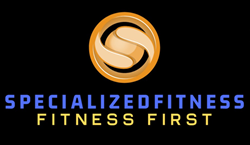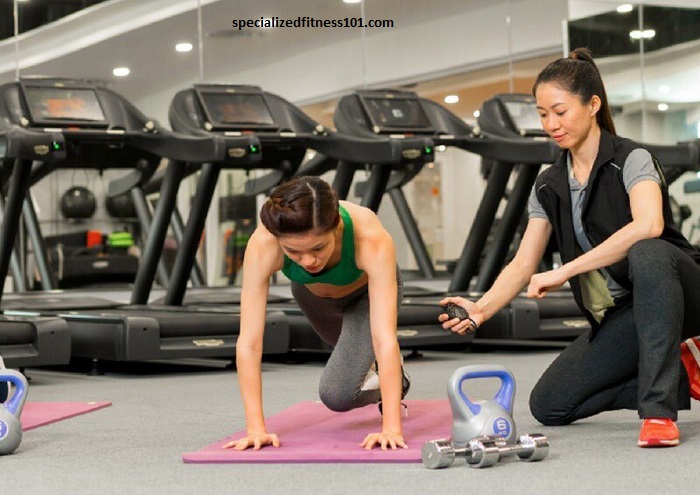Fitness First: A Broad Compendium on Fitness and Wellness:
In today’s fast-food world with life sitting behind a console screen, it is futile to ignore the call of need for fitness. Besides just being a physical affair, it has also taken an inclination towards mental and emotional fit for presenting a very complete approach toward health and well-being. This article outlines in great detail the dimensions and scope of fitness; some benefits, and finally a set of practical solutions regarding integrating the concepts of fitness into every life.

Knowing Fitness:
It essentially refers to the capability’s capability-rent exercises and physical activities. It is generally segmented into several components:
Cardiovascular Endurance:
Fitness :
The heart and lungs can allow oxygen supply during continued periods of physical activity. It’s a very important attribute toward overall health, enhanced by running, cycling, swimming, and many others.
Muscular strength:
Fitness :
It is the force that develops when a muscle or an assembly of muscles is being stretched to the maximum potential. Strength training activities, among others, include weight-lifting, resistance training, and body exercises.
Muscular endurance:
Fitness :
The muscle’s power to continue performing with no slackening in its force. Exercise that builds muscular endurance: circuit training and increasing repetitions in weightlifting exercises.
Flexibility: ability in which the joint will be moved as well be able to be moved around its range. Flexibility can be improved with several other exercises in stretching, practicing yoga, or pilates.
Body Composition:
Fitness :
The percentage of the fat mass versus lean tissue within the body. One is to keep up adequate body composition to sustain its healthy state.
Reward from Regular Exercise:
Fitness :
There have been many benefits for both physical and psychological rewards other than on the body, wherein some major rewards on listed hereunder:
Health via the Body
Weight Wellness:
Exercise keeps you underweight and at a higher risk of becoming fat because obesity is considered among diseases’ main risks of various diseases.
Lesser Likelihood of Chronic Diseases: Well, regular physical activity leads to a lesser likelihood of chronic diseases such as heart disease, diabetes, and certain types of cancers.
Improved Immune Function: Moderate exercise boosts the immunity. This is how the body would be better able to fight off infections and illnesses.
Mental Health:
Reduces Stress: Exercise causes the release of endorphins, the natural mood lifters of the body. These can help with lowering stress and anxiety.
Improved Sleeping: Physical fitness usually enhances the quality of sleep where one can be relieved of insomnia and several other sleep disorder conditions.
Increased Cognition: Researchers noticed that doing physical fitness daily improves the brain by enhancing memory power and mental concentration.
Community:
Relationship or Building: People make new friends and reduce their feelings of loneliness. Doing or taking part in activities in sports or group sessions enhances group fitness.
Social Pressure to Fitness: Exercising with others sometimes keeps in people the motivation needed for executing fitness activities.
Building a Fitness Plan:
You must create an efficient fitness plan to achieve the set goals on health and fitness. Some of the steps are:
1. Clear Goals
Start by creating clear and achievable goals. As such, you realize that losing weight, building muscles, or improving your cardiovascular well-being is achieved through having such goals in place. Use the SMART criteria:

Specific: Clearly define what you intend to achieve.
Measurable: Clearly define how you intend to measure your progress.
Achievable: Formulate achievable goals based on your fitness level.
Relevant: Your goal should help you attain your general health objective.
Time-bound: You must have a deadline when you should achieve your goals.
2. Pick Activities You Like
You will stick to your fitness program by picking activities you like. Try some of the exercises such as dancing, swimming, hiking, or a team sport. Just ensure you find something that you will look forward to doing.
3. Set a Schedule
Maintaining a routine of physical activity can make exercise an integral part of your daily life. You must set a goal of performing at least 150 minutes of moderate-intensity aerobic activity per week, in addition to muscle-strengthening activity on two or more days a week.
4. Be Flexible
It is good to have a routine, but you must always be flexible. You may never know what tomorrow or the day after might bring, so you need to adjust your schedule and activity about your schedule for the time being. So, be careful about rest days in case of your body to avoid getting too tired or getting injuries on the playing field.
5. Track Your Progress
Some form of journaling, keeping in track of ness with app-enabled devices, is vital for tracking. Write workouts down, record your diets, and even how your physical body and mental body react durinreactday. Following keeps you on track by letting you know if indeed your body has changed better after exercise.
Nutrition And Fitness:
Nutrition dictates all aspects of fitness as this is the food within you that helps you keep a good physique to undergo daily physical activities and aids one to recover faster from daily stresses or exercises.
1. Whole foods first
Eat whole and unprocessed foods that come with nutrients. Make plenty of fruits, veggies, lean proteins, whole grains, and grains fats parts of your diet. That is where the energy would come from to power off your workouts and keep you healthier.
2. Hydration
Hydration is important for optimal performance. The best way to hydrate is by drinking plenty of water throughout the day. An electrolyte-rich beverage or two after intense workouts is appropriate.
3. Meal Preparation
Healthy eating can be achieved by preparing meals in advance. Preparation of healthy snacks may also help avoid unhealthy habits that may tempt you.
4. Listen to Your Body
Pay attention to your body’s fullness and hunger cues to eat intuitively, meaning you will develop a healthy and balanced relationship with food.
Overcoming Fitness Barriers to Fitness:
It is well known that there are major barriers to trying to adopt fitness into people’s lives. Here are the common challenges and how to overcome these barriers:
1. Time Limitation
Solution: Reduce your workout time to 20-30 minutes and implement HIIT to be more effective. You can perform your workout during your lunch break or in the early morning.
2. Motivation
Solution: Set small, achievable goals and celebrate your successes. You can work out with a friend or join a fitness group to boost your motivation.

3. Inadequate Facility Access
Solution: bodyweight exercises, running, or biking around your neighborhood. Secondly, many excellent exercises can be done from the convenience of one’s own house requiring very little in terms of equipment.
4. Physical Disabilities
Solution: Consult with a doctor and/or a certified trainer about developing a modified workout schedule with any physical disabilities taken into account.

